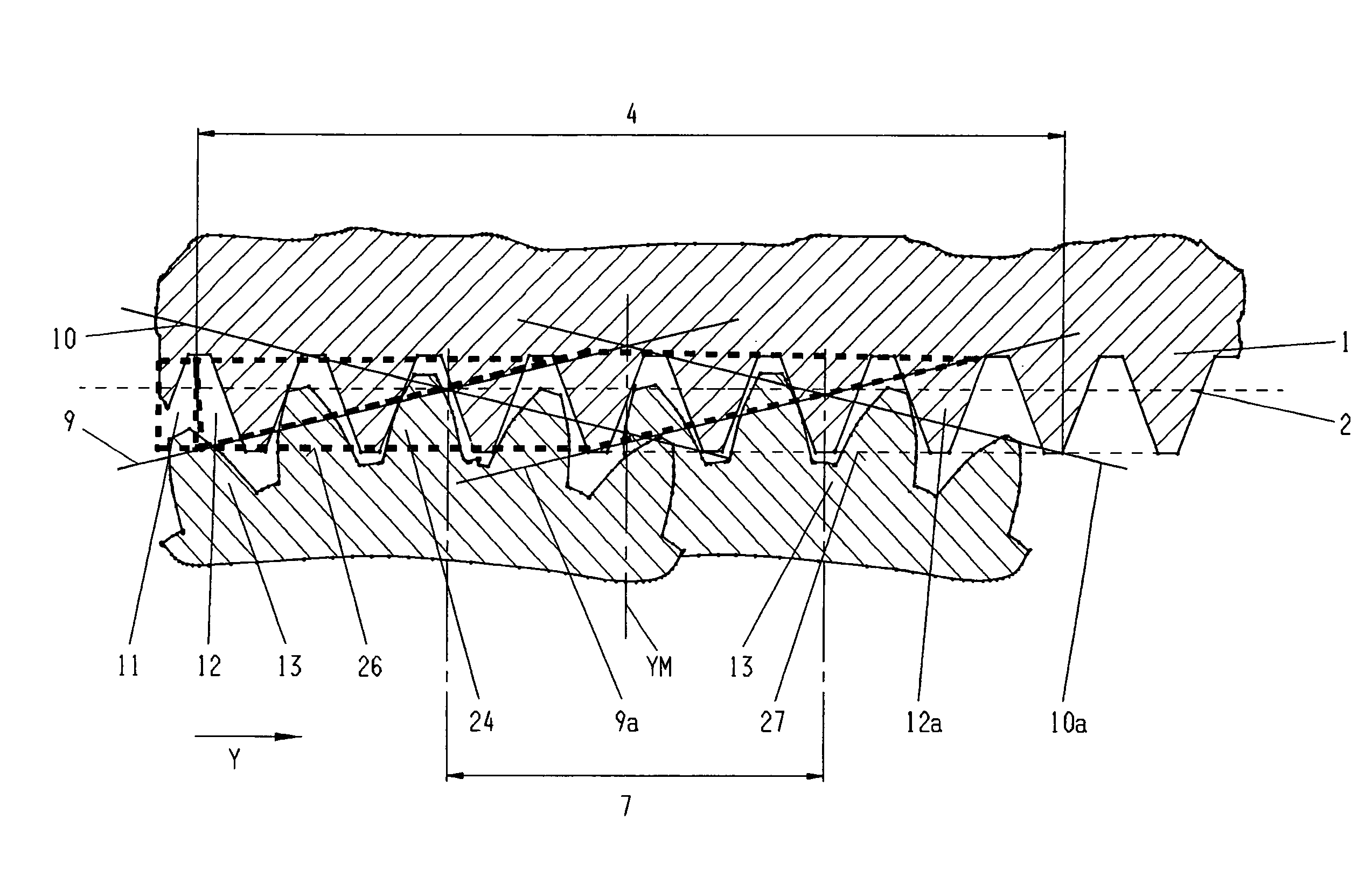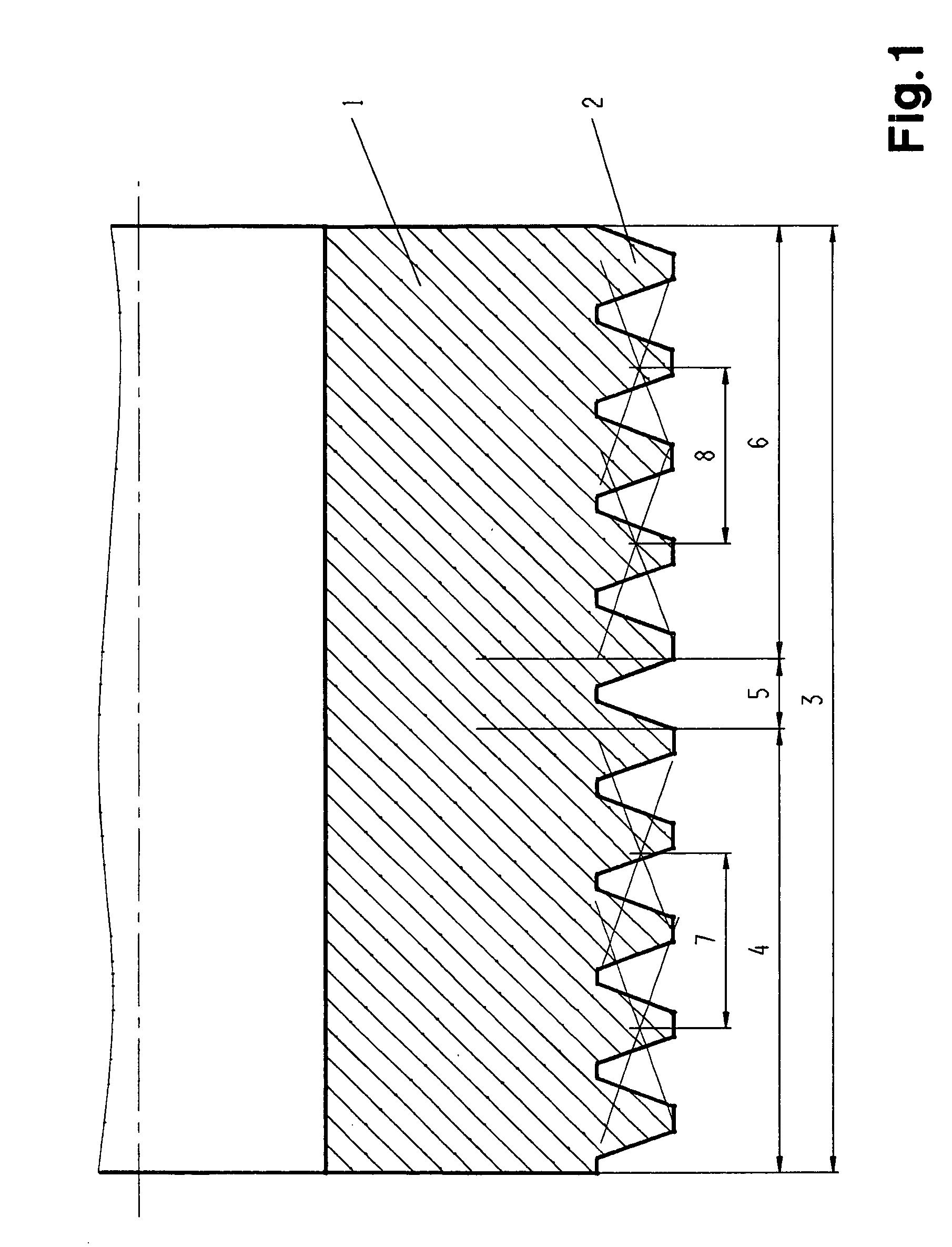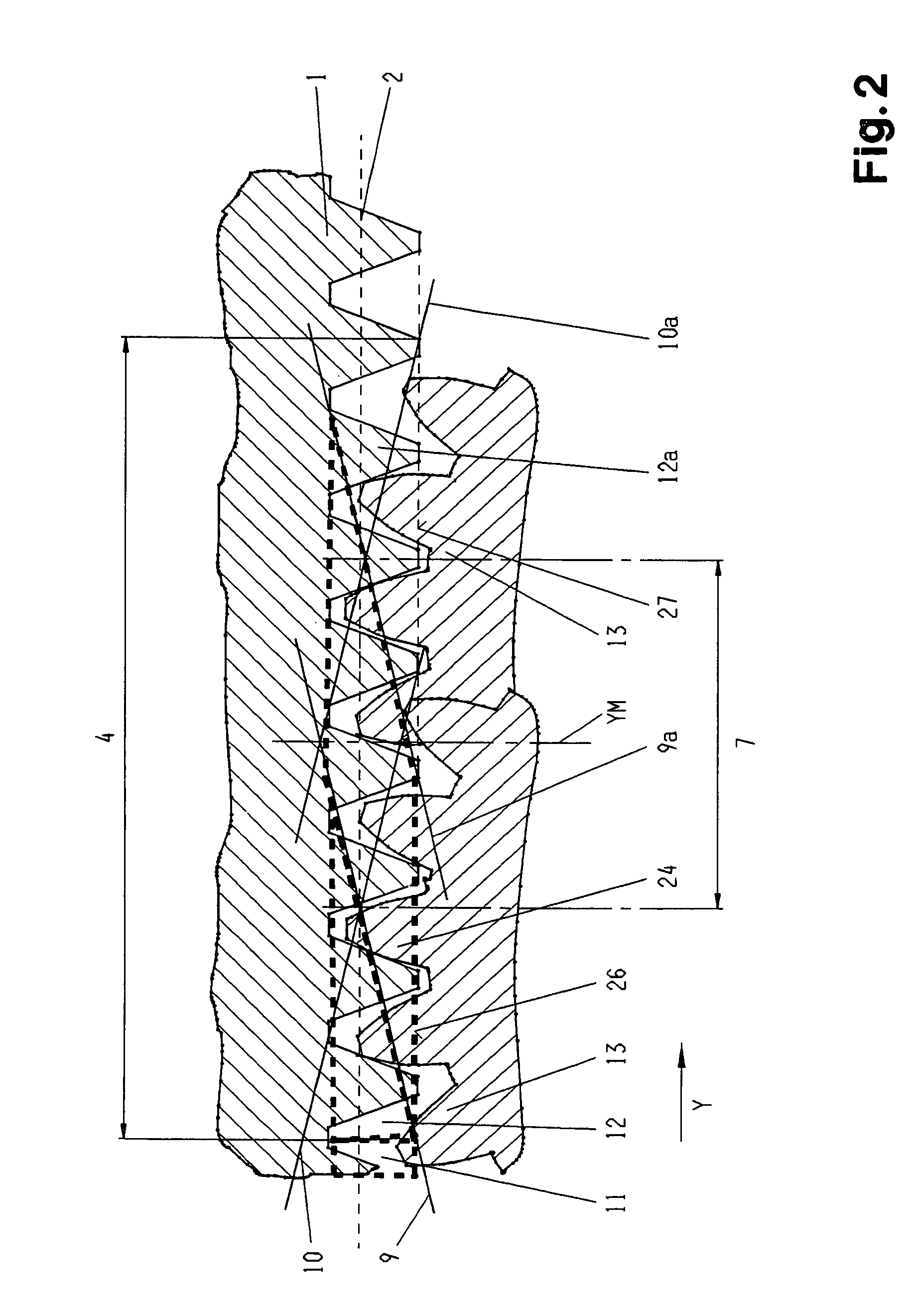Grinding worm, profiling gear and process for the profiling of the grinding worm
a technology of grinding worm and profiling gear, which is applied in the direction of grinding machines, gear teeth, other manufacturing equipment/tools, etc., can solve the problems of small number of workpieces that can be ground, residual deviations, and workpieces with such tooth flank modifications cannot be produced within limits, so as to increase the degree of worm exploitation, shorten the profiling time, and alter the degree of flexibility
- Summary
- Abstract
- Description
- Claims
- Application Information
AI Technical Summary
Benefits of technology
Problems solved by technology
Method used
Image
Examples
Embodiment Construction
[0036]In the FIGS. 1, 2a and 2b a part of a grinding worm is depicted such as corresponds with the background of the invention and such as is used for the continuous generation grinding of workpieces, in particular of the teeth of cylindrical spur and helical gears. It can be employed singly, or several grinding worms can be arranged coaxially one behind the other.
[0037]The grinding worm 1 is provided with a single or multi-start grinding worm profile 2 of cylindrical basic geometry. It has a total zone with a total width 3, the total zone being divided into a rough grinding zone 4, a transition zone 5 and a finish grinding zone 6.
[0038]It is also possible to employ separate grinding worms for rough grinding and for finish grinding. In this case the width of the rough grinding worm corresponds with the rough grinding zone width 4, and the width of the finish grinding worm with the finish grinding zone width 6. The distance between the rough and the finish grinding worms represents t...
PUM
| Property | Measurement | Unit |
|---|---|---|
| length | aaaaa | aaaaa |
| width | aaaaa | aaaaa |
| roughing shift width | aaaaa | aaaaa |
Abstract
Description
Claims
Application Information
 Login to View More
Login to View More - R&D
- Intellectual Property
- Life Sciences
- Materials
- Tech Scout
- Unparalleled Data Quality
- Higher Quality Content
- 60% Fewer Hallucinations
Browse by: Latest US Patents, China's latest patents, Technical Efficacy Thesaurus, Application Domain, Technology Topic, Popular Technical Reports.
© 2025 PatSnap. All rights reserved.Legal|Privacy policy|Modern Slavery Act Transparency Statement|Sitemap|About US| Contact US: help@patsnap.com



